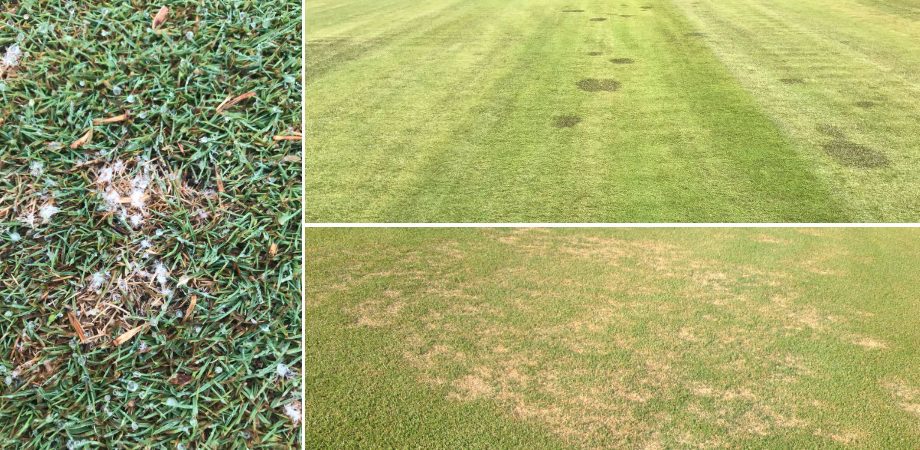Fall Golf Course Disease Control in the Transition Zone

With golf courses consisting of both cool-season and warm-season grasses, fall is a busy time when it comes to disease management in the transition zone. However, the name of the game for fall disease management in the transition zone is “put it to bed clean.” If you want to come out in spring clean and disease free, you have to put your course to bed clean and disease free.
Soil-borne diseases are on their way out of the transition zone as the weather dries out and the humidity lessens. Now and into September is the time to make sure your last strobilurin fungicide application (FMC’s Fame, BASF’s Insignia, and ArmorTech’s Zoxy-T) is put down.
A disease to watch out for going into the fall for the transition zone is dollar spot on bentgrass. Dollar spot is easily a top-tier disease golf courses have to battle each year in the transition zone, and it can be seriously destructive to playing surfaces.
The fungal pathogen behind this foliar disease that can cause so much destruction is Sclerotinia homoeocarpa. Sclerotinia homoeocarpa survives in infected plants and plant debris. The fungal pathogen spreads through mycelium and distributes by wind, water, shoes, and turf maintenance equipment (like a mower). In cases of dollar spot with high severity, the infected areas combine to create larger infected areas. A go-to-product for dollar spot is BASF’s Xemplar.
One thing you do not want to do when dealing with fall dollar spot in the transition zone is to let the chillier temperatures fool you. Dollar spot can flare up all the way into November. If you have lingering dollar spot issues in the fall that are not addressed, you are going to have dollar spot issues in the spring.
A great way to control dollar spot outbreaks is maintaining liquid nitrogen levels. Dollar spot is a low nitrogen disease, so maintaining those levels is key. Checking up on moisture management and fertility is also helpful when controlling dollar spot. Keep scouting for dollar spot throughout the fall, while implementing the above suggestions, and you will reach an adequate control of the disease.
Two diseases that particularly need to be addressed in the fall to have a successful spring with bermuda and zoysia grasses are zoysia patch and spring dead spot. Zoysia patch affects zoysiagrass and spring dead spot affects bermudagrass. A preventative fungicide application, especially for more warm-season areas, should be put down around October 1st. A go-to-product for both applications is ArmorTech’s TEB 360 XL.
The very last app of the fall, if needed, is going to be a snow mold app. While snow mold is not as severe in the transition zone as it is up north, a preventative application could still be applied. The decision to put down a snow mold application should be made by November.







